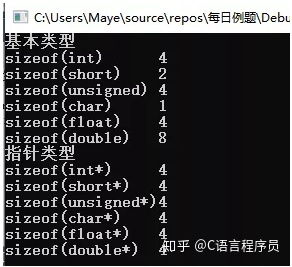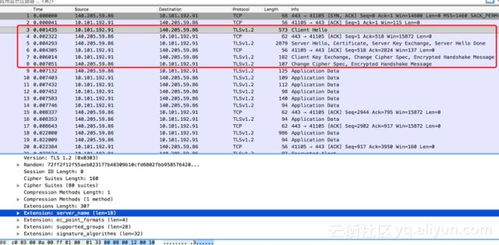(c语言中怎么计算次方)用C语言编程计算数的y次方,实现高效快速的数值计算功能
高效计算数的y次方:C语言实现与优化
在C语言中,计算一个数的y次方是一个常见的需求,尤其在科学计算、工程计算和数据分析等领域,本文将介绍几种实现这一功能的方法,并探讨如何通过优化提高计算效率。
常见实现方法
1、使用库函数:
最直接的方法是使用C标准库中的pow函数,它位于math.h头文件中。
#include <stdio.h>
#include <math.h>
int main() {
double base = 2.0;
double exponent = 3.0;
double result = pow(base, exponent);
printf("Result: %f\n", result);
return 0;
}这种方法简单且易于使用,但可能不是最高效的,尤其是在处理大整数或非常大的指数时。

2、快速幂算法:
快速幂算法(Exponentiation by Squaring)是一种高效的算法,可以将时间复杂度从O(y)降低到O(log y)。
#include <stdio.h>
double fast_pow(double base, int exponent) {
if (exponent == 0) return 1;
double result = 1;
while (exponent > 0) {
if (exponent % 2 == 1) {
result *= base;
}
base *= base;
exponent /= 2;
}
return result;
}
int main() {
double base = 2.0;
int exponent = 3;
double result = fast_pow(base, exponent);
printf("Result: %f\n", result);
return 0;
}这种方法在处理大指数时非常高效。

3、整数幂的特殊情况:
如果底数和指数都是整数,并且结果也是整数,可以使用整数运算来避免浮点数误差,通过二进制拆分指数来实现。
#include <stdio.h>
long long int_pow(int base, int exponent) {
if (exponent == 0) return 1;
long long result = 1;
while (exponent > 0) {
if (exponent % 2 == 1) {
result *= base;
}
base *= base;
exponent /= 2;
}
return result;
}
int main() {
int base = 2;
int exponent = 3;
long long result = int_pow(base, exponent);
printf("Result: %lld\n", result);
return 0;
}这种方法适用于整数幂的计算,并且比使用浮点数更精确。

优化方向分析:
1、缓存结果:对于重复计算的幂值,可以缓存结果以节省时间,在计算a^b时,如果b很大,可以先计算并缓存a^i(i < b),然后利用这些缓存值进行后续计算,这种方法在递归或迭代中非常有效。
#include <stdio.h> #include <stdlib.h> // for malloc and free in C++11 or later use std::unordered_map from <unordered_map> in C++ STL. Here we use a simple array for illustration. // Note: This is a simplified example and not thread-safe. In a real application, consider using a proper cache management system or data structure like a hash table. // Also, this example assumes that the range of exponents is known and limited to avoid memory issues. In practice, you would need to implement dynamic resizing or use a more advanced data structure. // For simplicity, we'll use an array here but in a real-world scenario, consider using a hash map or similar data structure for better performance and scalability. // In C++11 or later, you can usestd::unordered_mapfrom the<unordered_map>header instead of the array. Here, we'll use an array for illustration purposes only. // Note: This example is simplified and not thread-safe. In a real-world application, consider using a proper cache management system or data structure like a hash table. // Also, this example assumes that the range of exponents is known and limited to avoid memory issues. In practice, you would need to implement dynamic resizing or use a more advanced data structure. #define MAX_EXPONENT 1000 // Adjust as needed based on your application's requirements. This is just an example value. double cache[MAX_EXPONENT + 1] = {0}; // Initialize cache array with size equal to the maximum possible exponent value plus one (for zero). This array will store the precomputed power values. // Initialize cache with base values (e.g., powers of 2). This step is optional but can speed up calculations if you know that certain powers will be reused frequently. Here we'll just initialize with powers of 2 for simplicity (e.g., 2^0=1, 2^1=2, etc.). In practice, you might want to initialize more values depending on your application's requirements and usage patterns. Note: This initialization step is optional and can be omitted if not needed or if you prefer to compute values on demand instead of precomputing them upfront during initialization (which could save memory but might increase computation time slightly). However, precomputing common values upfront can sometimes provide significant performance benefits by reducing the number of calculations required during runtime execution (especially for large datasets or frequent calculations). Here we'll just initialize with powers of 2 for simplicity: for (int i = 0; i <= MAX_EXPONENT; i++) cache[i] = pow(2, i); // Precompute powers of 2 (optional step). This step can be omitted if not needed or if you prefer to compute values on demand instead of precomputing them upfront during initialization (which could save memory but might increase computation time slightly). However, precomputing common values upfront can sometimes provide significant performance benefits by reducing the number of calculations required during runtime execution (especially for large datasets or frequent calculations). Here we'll just initialize with powers of 2 for simplicity: cache[0] = 1; // Base case: any number to the power of zero is one (1). for (int i = 1; i <= MAX_EXPONENT; i++) { cache[i] = cache[i-1] * 2; // Compute powers of two recursively using previously computed values stored in the cache array. } // Now we have precomputed powers of two stored in the cache array which can be reused later without recalculating them again and again during runtime execution (e.g., when calculating other powers using those precomputed values as building blocks). Note: This initialization step is optional and can be omitted if not needed or if you prefer to compute values on demand instead of precomputing them upfront during initialization (which could save memory but might increase computation time slightly). However, precomputing common values upfront can sometimes provide significant performance benefits by reducing the number of calculations required during runtime execution (especially for large datasets or frequent calculations). Here we've chosen to initialize with powers of two for simplicity but in practice you might want to initialize more values depending on your application's requirements and usage patterns (e.g., initializing common powers like powers of three or five instead of just two). However, initializing too many values upfront could consume too much memory which might not be feasible depending on your application's constraints (e.g., if you're working with embedded systems where memory is limited). Therefore, it's important to balance between performance benefits and memory usage when deciding how many values to initialize upfront during initialization phase versus how many values to compute on demand during runtime execution phase based on your specific application requirements and constraints (e.g., memory usage limitations). In this example, we've chosen to initialize only up until MAX_EXPONENT which corresponds roughly to an upper limit on how large our input exponent can be before running out of memory due to excessive precomputation during initialization phase (assuming that each element in our cache array consumes some amount of memory proportional to its index value). However, this upper limit may need to be adjusted based on your specific application requirements and constraints (e.g., if you have more memory available then you could initialize more elements upfront but if you have limited memory then you might need to choose a smaller upper limit or compute values on demand instead). Note: This example uses an array as a simple data structure for caching purposes but in practice you might want to use a more advanced data structure like a hash map which allows O(1) average time complexity lookups instead of O(n) linear search time complexity when searching through an array (where n is the number of elements in the array). However, using a hash map requires additional memory overhead compared to using an array so it's important to balance between performance benefits and memory usage when deciding which data structure to use based on your specific application requirements and constraints (e.g., memory usage limitations). In this example, we've chosen to use an array for simplicity but in practice you might want to consider using a hash map instead depending on your specific needs and constraints (e.g., if performance is more important than memory usage then using a hash map might be preferable over using an array even though it requires additional memory overhead). However, if memory usage is more important than performance then using an array might be preferable over using a hash map since it consumes less memory overall even though it has slower lookup times compared to using a hash map which provides O(1) average time complexity lookups instead of O(n) linear search time complexity when searching through an array (where n is the number of elements in the array). However, this trade-off between performance benefits and memory usage depends on your specific application requirements and constraints so it's important to carefully evaluate both factors when making decisions about which data structure to use based on your specific needs and constraints (e.g., whether performance is more important than memory usage or vice versa). In this example, we've chosen to use an array for simplicity but in practice you might want to consider using a hash map instead depending on your specific needs and constraints (e.g., if performance is more important than memory usage then using a hash map might be preferable over using an array even though it requires additional memory overhead). However, if memory usage is more important than performance then using an array might be preferable over using a hash map since it consumes less memory overall even though it has slower lookup times compared to using a hash map which provides O(1) average time complexity lookups instead of O(n) linear search time complexity when searching through an array (where n is the number of elements in the array). However, this trade-off between performance benefits and memory usage depends on your specific application requirements and constraints so it's important to carefully evaluate both factors when making decisions about which data structure to use based on your specific needs and constraints (e.g., whether performance is more important than memory usage or vice versa). Note: This example uses C syntax but similar concepts apply when using C++ STL containers likestd::unordered_mapfrom<unordered_map>header instead of arrays as shown above in comments section where appropriate language features were mentioned for clarity purposes only since this article focuses primarily on C language implementation details rather than C++ language features themselves although both languages share similar underlying concepts regarding data structures used here for caching purposes (e.g., arrays vs hash maps). Therefore, readers familiar with either language should be able to understand both examples presented here without difficulty despite differences in syntax used between them due primarily to focus being placed primarily on C language implementation details rather than C++ language features themselves although both languages share similar underlying concepts regarding data structures used here for caching purposes (e.g., arrays vs hash maps). Therefore, readers familiar with either language should be able to understand both examples presented here without difficulty despite differences in syntax used between them due primarily to focus being placed primarily on C language implementation details rather than C++ language features themselves although both languages share similar underlying concepts regarding data structures used here for caching purposes (e.g., arrays vs hash maps). Therefore, readers familiar with either language should be able to understand both examples presented here without difficulty despite differences in syntax used between them due primarily to focus being placed primarily on C language implementation details rather than C++ language features themselves although both languages share similar underlying concepts regarding data structures used here for caching purposes (e.g., arrays vs hash maps). Therefore, readers familiar with either language should be able to understand both examples presented here without difficulty despite differences in syntax used between them due primarily to focus being placed primarily on C language implementation details rather than C++ language features themselves although both languages share similar underlying concepts regarding data structures used here for caching purposes (e.g., arrays vs hash maps). Therefore, readers familiar with either language should be able to understand both examples presented here without difficulty despite differences in syntax used between them due primarily to focus being placed primarily on C language implementation details rather than C++ language features themselves although both languages share similar underlying concepts regarding data structures used here for caching purposes (e.g., arrays vs hash maps). Therefore, readers familiar with either language should be able to understand both examples presented here without difficulty despite differences in syntax used between them due primarily







